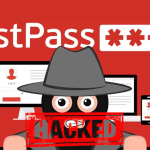
Fraudsters are everywhere on the Internet. If you run a website that allows users to create an account in order to access goods or services then you will definitely encounter your fair share of them. For the purpose of this article, we’ll cover 2 types of such fraudsters.
Plus, the amount of online fraud has dramatically increased over the last couple of years due to worldwide pandemic, which according to the latest print on demand eCommerce stats, is due to the online business market growing like crazy.
Credit card fraudsters
This is the type of fraudster that you’ll see frequently if you run an online business. They will create multiple fake accounts with various email addresses, often using free or disposable email providers. For them, it’s a form of anonymization to cover their malicious activities. As far as the online merchant is concerned, they are different people because the email address is different.
After creating multiple fake accounts, the fraudster will then attempt to purchase multiple items at the website using stolen credit cards. With different accounts and varying email addresses, it’s often hard to manually trace the culprit. In the end, the online merchant will suffer severe financial losses from chargebacks by the legitimate card owners.
Spamming fraudsters
Now, these guys are everywhere in forums, blogs, review sites, etc. They are often paid shills that are given the task of promoting some dodgy websites or giving fake reviews to boost the status of a questionable product. They just keep spamming everywhere that they can post their website links as well as any review sites.
Similar to the credit card fraudsters, they hide behind the identities of multiple email accounts. Without an automated screening tool, it would be next to impossible to identify all such accounts. Using mass spamming bots, they can severely compromise the integrity of review sites as well as degrade the usage experience of the normal web users.
How to limit the fake account issue?
In the case of the credit card fraudsters, online merchants can use FraudLabs Pro which offers both plugins or APIs to screen out fraudulent credit card transactions. The highly sophisticated algorithm in FraudLabs Pro, coupled with blacklists powered by feedback from other merchants, makes it a highly effective screening tool to block the transaction.
Since both types of fraudsters rely on fake accounts to perform their nefarious deeds, the use of the FraudLabs Pro SMS Verification is another tool to prevent the fraudsters from signing up with multiple accounts. By requiring a mobile phone number to receive the One-Time-Passcode (OTP) for verification, it is a lot harder for bad actors to successfully sign up for multiple accounts.
In the case of blocking the scammers and spammer on your website, there are plenty of tools available to fight the spammers, which very much depends what your website is built with. One of the most popular solutions is Cleantalk, which can be installed on any website, and blocks spam silently in the background. No annoying captcha or math problems for users to solve.
For added security against other kinds of threats/issues, I recommend Sucuri, which is a web application firewall/proxy service that sits in front of your website and filters all requests for malicious activity and blocks them before they ever reach your website.
For customers using WordPress, it is also critical to have a security plugin to monitor your WordPress installation and protect against malware. A popular passive solution is Malcare, which will detect an automatically remove malware, which is great for sites which are not being professionally managed. At the very least it is recommended to have the free versions version of Wordfence or Sucuri plugins.
Conclusion
Deploying at least basic security/protection doesn’t need to cost you an arm and a leg, in fact in many cases it is actually FREE. The FraudLabs Pro protection is an easy and fast way to limit the potential damage that fraudsters can do to your website and your reputation. Their Micro plan is completely free, so there is no reason not to give it a try.
FYI I do use all the above services myself for both myself and many of my clients.







